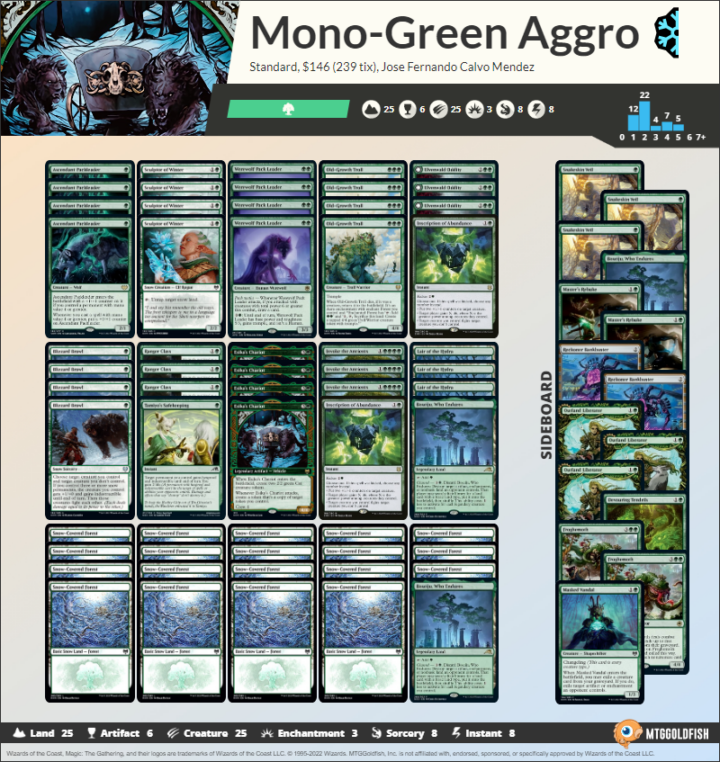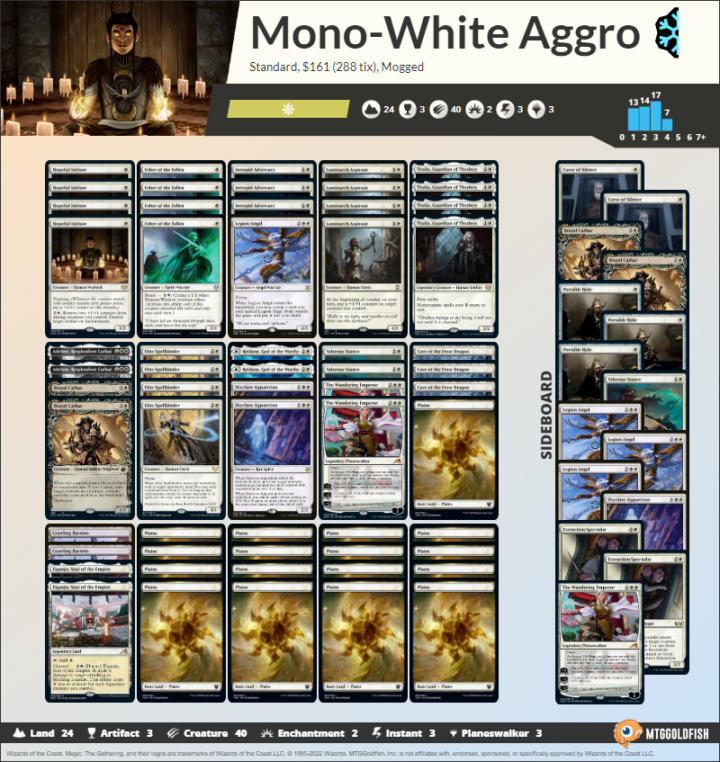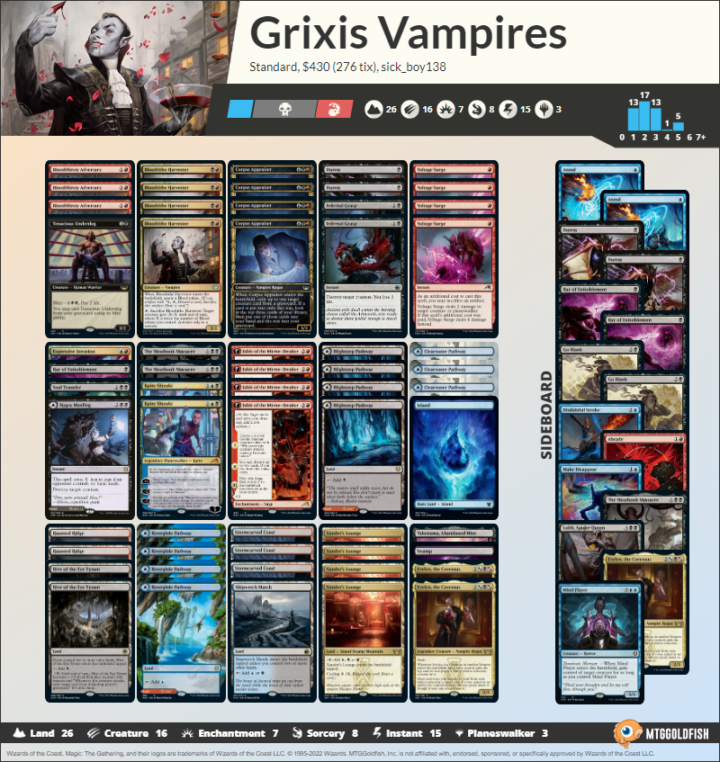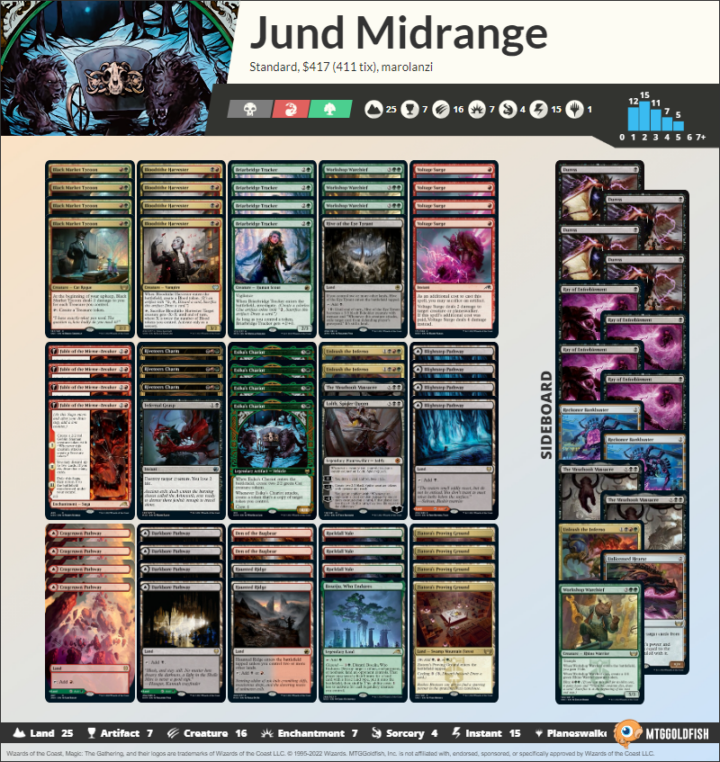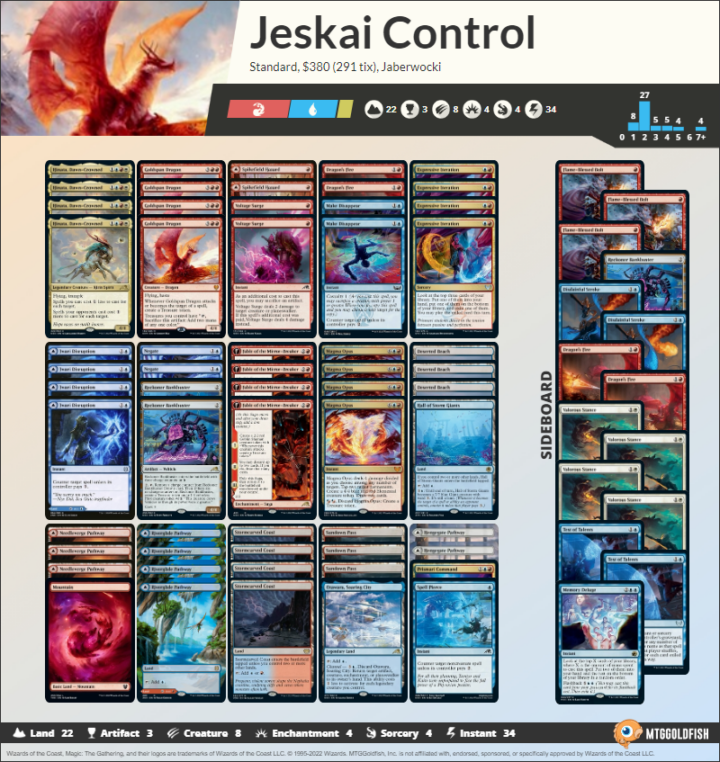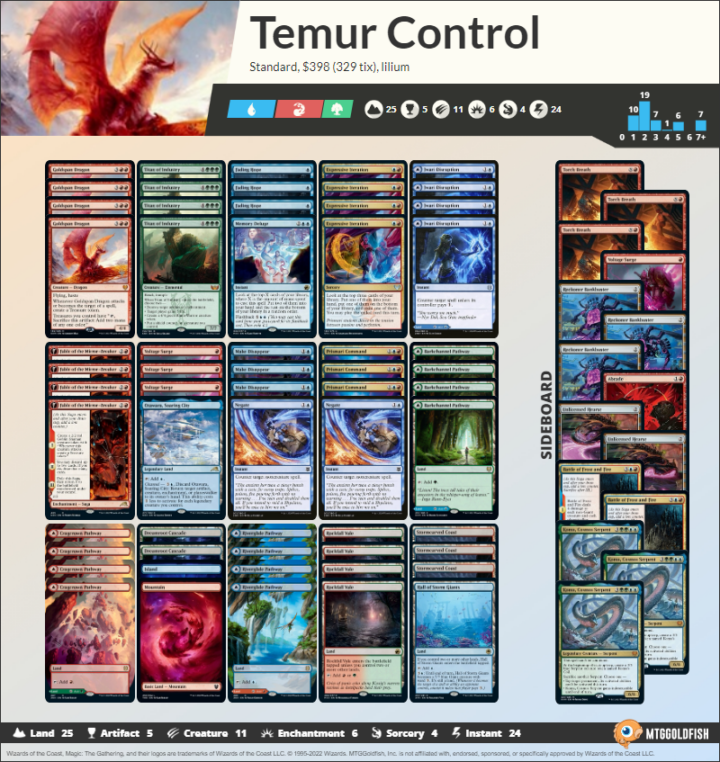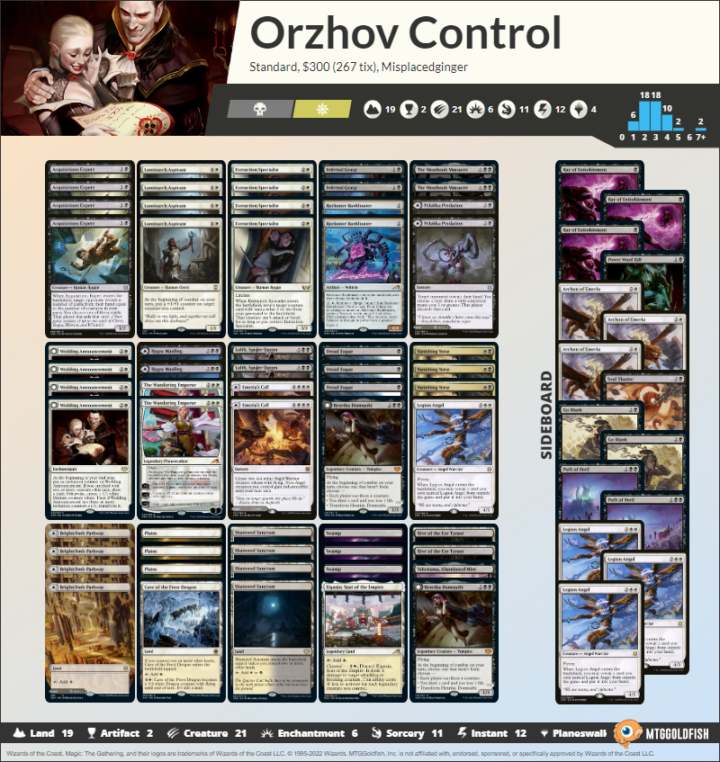Standard! That’s right, an article about the state of Standard! Back in the days of the old Pro Tour, Standard was the constructed format of three out of every four of them. A powerhouse format, driving much of the conversation in constructed Magic, and making up the majority of high-level competitive play, nearly every Friday Night Magic had an option for Standard play, and articles and content about the format abounded online.

When you take big swings, you might miss every now and then.
And then, well, yes. A lot happened. A series of high-profile bans happening with far more regularity than they ever had shook the format, creating metagames that frustrated a lot of players. Changes in Organized Play that shifted some focus away from high-level in-store events and towards Arena further eroded the player base. When the pandemic hit and competitive in-person play all but ceased, Organized Play and Standard faded into the background as Commander stepped into the forefront of online content. Even with the recent revamping of Organized play, the initial focus of the new program is on Pioneer. All of this combined into a perfect storm that seems to have left Standard as an afterthought.

Okay, that’s…that’s a lot of big swings.
And yet, it turns out that reports of the death of Standard may have been exaggerated. A little bit ago, there was a lot of chatter online (which even Wizards acknowledged) about the various Constructed formats offered on Arena and how often they got played. The point of the discussion had to do with the community’s reaction to the Alchemy format, but the data that everyone was citing clearly showed that Standard was far and away the most popular format on the platform.
So let’s check in on the state of Standard, take a look at the overall metagame, and a deeper look at a few decks in particular. We’re going to be pulling from two main places – MTGTop8.com, and MTGGoldfish.com. Goldfish calculates its meta percentages simply based off of user-submitted decks, while MTGTop8 looks at submitted tournament results – looking at a mix of the two should give us a good representation of the format across all levels of play.
The Metagame
The Standard metagame usually breaks down into three main categories that function as a rock-paper-scissors-style ecosystem: Aggro, fast aggressive decks that look to play efficient threats and close the game out quickly; Midrange, decks that set up larger threats and engines, usually winning through value plays and big haymakers; and Control, decks that look to run the other decks out of resources and grind out wins after the opponent is depleted. Aggro tends to prey on Control decks, Midrange can outclass Aggro’s threats, and Control can outlast Midrange. That’s the usual breakdown, anyway.
You might be wondering where Combo fits into this, as it’s such a large consideration in other formats’ metagames. Standard usually doesn’t have much of a true combo component. While it can have a style of combo decks, these usually function more as Control decks with a specific win condition rather than traditional win-super-fast style Combo decks in older formats.
All right! With all that preamble out of the way, we look at the Standard Metagame!
Aggro
Boros
Pure Red-deck-wins-style decks have been on the wane for a while now. After Embercleave rotated out, it felt like Wizards R&D was giving the archetype a bit of a break. Obviously, this deck has a second color, and therefore doesn’t technically qualify as RDW.
But the way it plays out, with a mix of hasty creatures and cheap burn spells that can be pointed at your opponent, feels very much like a classic creature-based Burn deck. This version has a resiliency into the midgame that a lot of pure RDW decks can lack, as it features a suite of creatures that can grow over time. Hopeful Initiate, Luminarch Aspirant, Sunrise Cavalier, and Thundering Raiju can all become big threats quite fast, especially when combined with Angelfire Ignition (usually out of the sideboard).
This is the most classic Aggro deck in the format – it can lock out games blisteringly fast, but if your opponent can stabilize or if you stumble and run out of threats, it can be hard to recover. If you want to get a lot of games in fast, win or lose, this deck is a great choice.
Mono-Green
Here we have fully creature-based Aggro. Featuring very efficiently costed threats in a perfect curve of Ascendant Packleader, Werewolf Pack Leader, Old-Growth Troll, and Ulvenwald Oddity, this deck is just looking to put hammers on board and start swinging them.
Ranger Class and Inscription of Abundance can grow your threats as the game goes on, with Inscription also pairing with Blizzard Brawl as removal. Esika’s Chariot can help you go wide, especially when paired with Invoke the Ancients. Given the size of the threats and the ability to amass a very wide board, this is an Aggro deck that can hang with Midrange once those decks start being able to deploy their larger spells.
Sequencing can be very important in the early game, as you need to balance wanting a blazing-fast start with the need to land your larger threats. Knowing what to play around and when is key in some matchups. In others you just make big scary monsters and turn them sideways.
Mono-White
If you really hate losing to control decks, the current version of Mono-White may be right for you. It can function as a pretty typical go-wide army deck, pumping out a lot of small threats early with some evasion thrown in. Usher and Adeline can start pumping out tokens, while Brutal Cathar and Skyclave Apparition clear the way. Add Intrepid Adversary, Luminarch Aspirant, and The Wandering Emperor to grow your army and Legion Angel as a top-end flyer, and you have a pretty solid game plan already.
But this is Mono-White, which means we can essentially play a Death & Taxes style deck. Thalia, Guardian of Thraben, Elite Spellbinder, and Reidane, God of the Worthy all delay your opponent’s non-creature answers for at least a turn or two. Often, that’s all you need to hold off an effective board wipe to win the game.
Naya Enchantments
Between Kaldheim and Kamigawa: Neon Dynasty, a lot of Enchantments and Enchantment-matters cards were introduced. Naya Enchantments plays them as a snowball that’s just a few steps shy of feeling like a Combo deck.
Jukai Naturalist and Runeforge Champion combine to make any of the three different types of Runes in your deck free to cast, each of which draws you cards. Each time you cast an Enchantment, Generous Visitor and Kami of Transience grow bigger and bigger. From there, Showdown of the Skalds keeps the cards flowing, and puts counters wherever you need them.
This is a deck whose sum is greater than its parts, each piece combining to make some truly fearsome threats. Unless your opponent has an answer for pretty much every creature you put on the battlefield, it can become a game-swinging beater frighteningly fast.
Midrange
Esper Midrange
Esper Midrange straddles the line between Midrange and Control, but tends to focus more on removal than permission, while still wanting to commit to the board early, so in Midrange it goes. Raffine provides an ever-growing evasive threat that also provides card selection, and pairs well with cards like Kaito, Luminarch Aspirant, and Wedding Announcement that provide advantage over time.
Growing your army’s size also works well with The Meathook Massacre, and Tenacious Underdog is the rare creature that you often don’t mind losing to your own board wipe. Lolth and The Wandering Emperor also join the fray as sticky threats that just accrue value for you over time. And Obscura Interceptor is the most annoying kind of counterspell, adding to the board and likely gaining life at the same time it sets the opponent back a turn.
Grixis Vampires
Evelyn the Covetous may be the headliner here, but the core of Bloodthirsty Adversary, Bloodtithe Harvester, and Corpse Appraiser each provide a ton of value in efficient threats. Plus, each of those three works exceptionally well with a flipped Fable of the Mirror-Breaker, which also triggers Evelyn each time. Synergistic Tribal decks, gotta love ‘em.
That creature package is backed up by a suite of all-purpose removal, Kaito and Sorin, and sideboard options that let you become a fairly decent discard-control deck in a pinch.
Jund
The most grindy of the Midrange decks, Jund isn’t looking to slam the door quickly or in one fell swoop. It’s just going to shut the door with inexorable pressure.
Briarbridge Tracker and Bloodtithe Harvester are the creatures in the deck, and both pair well with (once again) Fable of the Mirror Breaker. This deck also plays probably the fairest Esika’s Chariot in Standard, although copying a Wrenn and Seven token can close a game out quick. Reckoner Bankbuster and Riveteers Charm keep the cards flowing, with the charm also doubling as removal alongside Unleash the Inferno, Voltage Surge, and Infernal Grasp. Finally, Valki, God of Lies can steal a creature from an opponent’s hand, but is far more likely to put the nail in the coffin as Tibalt, Cosmic Imposter.
Control
Jeskai Control
There’s a couple different configurations of Jeskai in the format, but the most popular is a Control deck that uses Goldspan Dragon and Hinata, Dawn-Crowned to power out a Magma Opus or two a few turns ahead of schedule.
A full suite of early interaction in cheap red removal and counterspells help keep the board clear for the first few turns, with Prismari Command and Expressive Iteration helping to find your flying threats. Casting one Magma Opus on your opponent’s upkeep is usually enough to lock up a game, and a secondary plan of protecting the ever-present Fable of the Mirror-Breaker and copying some Dragons works equally well.
Temur Control
Temur Control follows the same basic game plan as Jeskai – control the board early until you can deploy your haymaker threats and close out the game quickly from there. The same Izzet core powers both decks, with all the same counterspells and removal in tow.
Rather than Hinata and Magma Opus, however, Temur is looking to cast Titan of Industry. Fable of the Mirror-Breaker is a little more central to the plan here, as copying a Titan once is usually enough to seal up the game. With additional threats like Koma in the sideboard, and more willingness to side in a sweeper like Battle of Frost and Fire, the plan with Temur is just to go big, one way or another.
Orzhov Control
Orzhov Control is all about resiliency and controlling what sticks on the battlefield. Without Blue for any kind of permission, Orzhov instead packs a mean little discard package and a fistful of removal options.
Acquisitions Expert works alongside Dread Fugue and Pelakka Predation to control your opponent’s hand. Extraction Specialist can buy back the Expert and Luminarch Aspirants to keep the value going even after they get removed. Henrika Domnathi and Legion Angel provide the evasive threats that help close out the game. Lolth and The Wandering Emperor are your planeswalking duo, keeping a steady flow of creatures and cards coming your way. The Meathook Massacre clears the board when needed, and Wedding Announcement builds your board and grows your army out of range of the Massacre.
Combo
THAT’S RIGHT, THAT BIT BEFORE WAS MISDIRECTION, THERE IS AN ACTUAL COMBO DECK IN STANDARD!
Ahem. Kind of.
Show of Confidence is essentially a conditional Storm card, and like Storm decks, this deck often looks to win with one big turn. Since this is Standard, that turn is usually somewhere between turns 5-7 rather than 1-3. Given that, the deck is built on a base of counterspells, bounce, and cheap red removal to make sure it can last until it’s ready to combo off.
And here’s how that works: First, in those early turns, make some treasure. You have either Fable of the Mirror-Breaker or Unexpected Windfall and Big Score to make that happen. As soon as you can, cast a Goldspan Dragon while still leaving yourself some treasure. From here, you can start casting those Windfalls and Scores for free (practically speaking, as the treasures will replace themselves).you can point small burn spells and Prismari Commands at your own Dragon to accrue more Treasure. If needed, you can use Lier to loop through all your spells again, eventually culminating in a Show of Confidence or two. As Show of Confidence will trigger the Dragon’s treasure-making ability for each copy, you can use it early to make a ton of mana and keep churning through your deck.
This deck can win from a literally empty board state as long as it has the mana to get started. If your opponent has any kind of real interaction, making sure the coast is clear is paramount. Beyond that, you just need a Dragon, some treasure, and a draw spell or two to get going.
That covers the most popular decks in the format, but there’s room in Standard for a very hefty fringe. Rakdos Sacrifice, Mardu or Esper Greasefang, Angels, and Fight Rigging decks are all options you can see in viable competitive play. I’ve been playing a lot of Standard on Arena recently (and pretty well, if I do say so myself), and while the decks I wrote about above are the core of the format, there’s still room for surpise.
Standard has gone through a rough patch in the past few years. But the steady rate of cards getting added in with old cards rotating out means that the format is constantly in flux, and if a current Standard isn’t quite to your taste, it’s not too long of a wait until the format gets shaken up again. The current state of Standard is in a pretty healthy place, with no one deck having too large a share of the metagame.
Whether you’re looking to get back into Standard, or have been with it the whole time, what deck looks good to you right now? Got an interesting brew? Let me know over on Twitter, and happy spellslinging!

Chris is the Marketing Communications Coordinator (and editor of the blog) at Card Kingdom. He would like to apologize to his son for not holding onto more cards from when he first started playing, as that likely would have paid for college. He enjoys pretty much all formats of Magic, but usually ends up playing decks that make other people dislike playing those formats with him.



